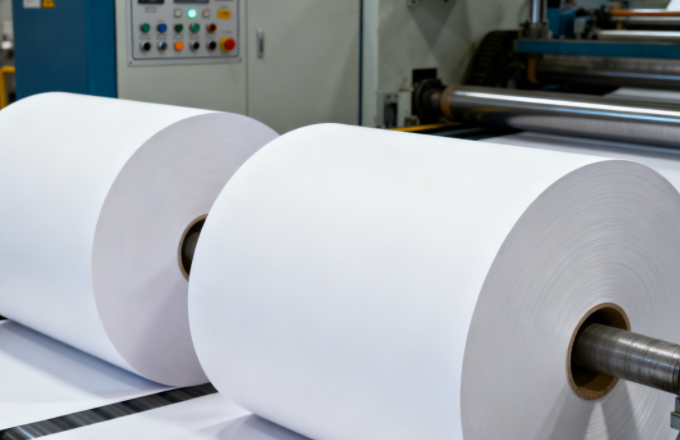Sep 30, 2025

White card paper, also known as ivory board or simply white board, is a high-quality, thick, and rigid paper product widely used in printing and packaging industries. It is characterized by its superior whiteness, smooth surface, and excellent stiffness, making it ideal for premium applications such as business cards, certificates, invitations, book covers, and high-end packaging.
The production of white card paper involves using bleached chemical wood pulp, advanced processing equipment, and sophisticated techniques to ensure a flawless finish. The paper is classified into three grades (A, B, and C) based on whiteness levels, with Grade A requiring a brightness of at least 92%, Grade B 87%, and Grade C 82%. Beyond its visual appeal, white card paper must meet stringent quality standards, including high tensile strength, burst resistance, and smoothness (unless embossed with patterns). It should also be free from streaks, spots, or warping.
White card paper typically consists of three layers: a top and bottom layer made from high-quality bleached pulp for smooth printing surfaces, and a middle filler layer composed of lower-grade materials to enhance thickness and rigidity. This structure allows for double-sided printing and ensures durability, making it suitable for luxury packaging like cigarette boxes, cosmetic cases, and children’s books. In China, manufacturers like Ningbo Zhonghua Paper Industry have significantly reduced reliance on imported white card paper by producing domestically sourced alternatives that rival international brands in quality but at lower costs.
To process white card paper efficiently, specialized machinery is required for converting roll stock into flat sheets or adjusting roll dimensions. For cutting roll materials into flat sheets, the Paper Saw King sheeting machine is an excellent choice. This high-precision equipment utilizes servo motors and advanced control systems to ensure clean, burr-free cuts, making it suitable for converting large rolls of white card paper into standardized sheets for printing or packaging.
For non-destructive adjustments to roll width and diameter, a slitting and rewinding machine is recommended. These machines feature automatic tension control, photoelectric edge alignment, and programmable settings to handle materials like white card paper without compromising quality. Examples include models like FJQ-1600 or WFQJ-1100, which offer precision slitting and rewinding for rolls up to 1,600mm wide, ensuring minimal waste and high efficiency.
When rapid adjustments to roll width are needed, a paper roll saw (e.g., XY-AI series) provides fast, automated cutting. These saws, equipped with servo-driven feed systems and PLC controls, can process multiple rolls simultaneously at speeds exceeding 100 cuts per minute, ideal for high-volume production lines.
In summary, white card paper’s versatility and premium qualities make it indispensable for high-end applications. Pairing it with the right converting machinery—whether sheeting machines, slitters, or roll saws—ensures optimal productivity and quality in industrial settings.
Main Products
Social Media
Social Media
Contact Us
+86 0512 5510 8067
Room 3, No.2159, Beimen Road, Yushan Town, Kunshan City, Jiangsu Province, China
Inquiry
Inquiry
News Center

November 29, 2025

November 24, 2025
Algeria's Paper Packaging Industry: A Rising African Powerhouse